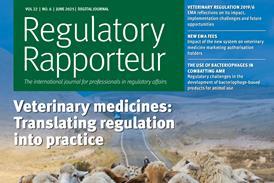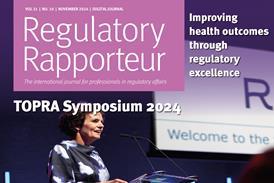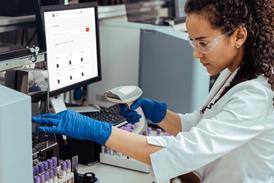All Journal articles – Page 3
-
 Journal
JournalThe EMA/NCA electronic product information initiative: Engagement, implementation and vision for the future
This interview with Juan García Burgos discusses the upcoming EMA/National Competent Authority electronic product information (ePI) initiative.
-
 Journal
JournalProduct information: An overview
This article gives an introduction to product information, how it is created and managed, and the benefits of transitioning to electronic product information labelling.
-
 Journal
JournalTranslating real-world needs into digital medication tools: Good practices for co-creation with patients
This article discusses the importance of patient engagement in digital health tool development, using the case study of the Gravitate-Health project.
-
 Journal
JournalWhat is regulatory affairs, how does it fit into the bigger healthcare picture and the role of industry in the regulatory process
An overview of a session at Regulatory Careers Live 2025 for students, graduates and those hoping to enter the profession on the role of regulatory affairs in the healthcare industry
-
 Journal
JournalFDA comparability guidance: The impact of cell and gene therapy products
This article analyses FDA draft guidance and other guidance documents and aims to address concerns about CGT products.
-
 Journal
JournalDiversity in clinical research: Regulatory considerations and updates
This article explores how to improve diversity and patient representation in clinical trials and looks at guidance from the EMA.
-
 Journal
JournalRealising opportunities to generate RWE for regulatory decisions through randomised pragmatic trials
This article summarises key features of the EFPIA paper and discusses how randomised pragmatic trials can be used to aid regulatory decision-making.
-
 Journal
JournalPatient involvement in the regulatory area: Insights into national level dialogues
This article explores the different areas of patient involvement in European NCA regulatory processes.
-
 Journal
JournalThe importance of patient advocacy in the EMA ODD process
This article discusses the role of patient advocacy groups in the orphan drug designation process to incoporate more patient-centred approaches.
-
 Journal
JournalThe evolving landscape of public and patient involvement
This article explores public and patient involvement (PPI) and its impact in shaping national policies.
-
 Journal
JournalDivergence on the definition of regulatory reliance in international regions: Is there room for convergence?
The article explores how reliance pathways can be used for MAAs and incorporates AstraZeneca’s research findings on this topic.
-
 Journal
JournalMedical device standards update: May 2025
This article updates the progress of applicable medical device standards to May 2025.
-
 Journal
JournalPromoting the use of bacteriophages in animals to reduce antimicrobial resistance
This article explores bacteriophage-based products for animals and how to reduce antimicrobial resistance (AMR).
-
 Journal
JournalSandbox of trust: Regulated AI for health promotion and disease prevention
This article explores the capacity and potential for AI tools in analysing health data and helping with disease prevention.
-
 Journal
JournalNew European Medicines Agency fees: The effect on veterinary medicines
In response to the EMA’s new fee system, this article dicusses the impact on marketing authorisation holders who place veterinary medicines on the market.
-
 Journal
JournalVeterinary Regulation 2019/6: Impact, challenges and the future: Interview with Ivo Claassen
In this interview, Claire McDermott talks with Ivo Classen, Head of the Veterinary Medicines Division and Deputy Executive Director of the European Medicines Agency on the impact of Veterinary Regulation 2019/6.
-

-
 Journal
JournalNavigating orphan drug designation in the EU
Orphan drug designation (ODD) is granted to help with the development of treatement for rare diseases. In this article, ODD’s legal framework and its benefits and challenges are explored.
-
 Journal
JournalNavigating the FDA’s platform technology designation: Key insights and best practices for drug manufacturers
This article discusses the platform technology designation (PTD) initiative, including its key elements, challenges and its overall significance.
-
 Journal
JournalPrescribing efficiency: Using generative artificial intelligence for pharmacovigilance
Pharmacovigilance stands as a cornerstone of patient safety but the processes can be arduous. This article explores how generative AI can optimise workflows, reduce reporting burdens and improve timeliness.



















